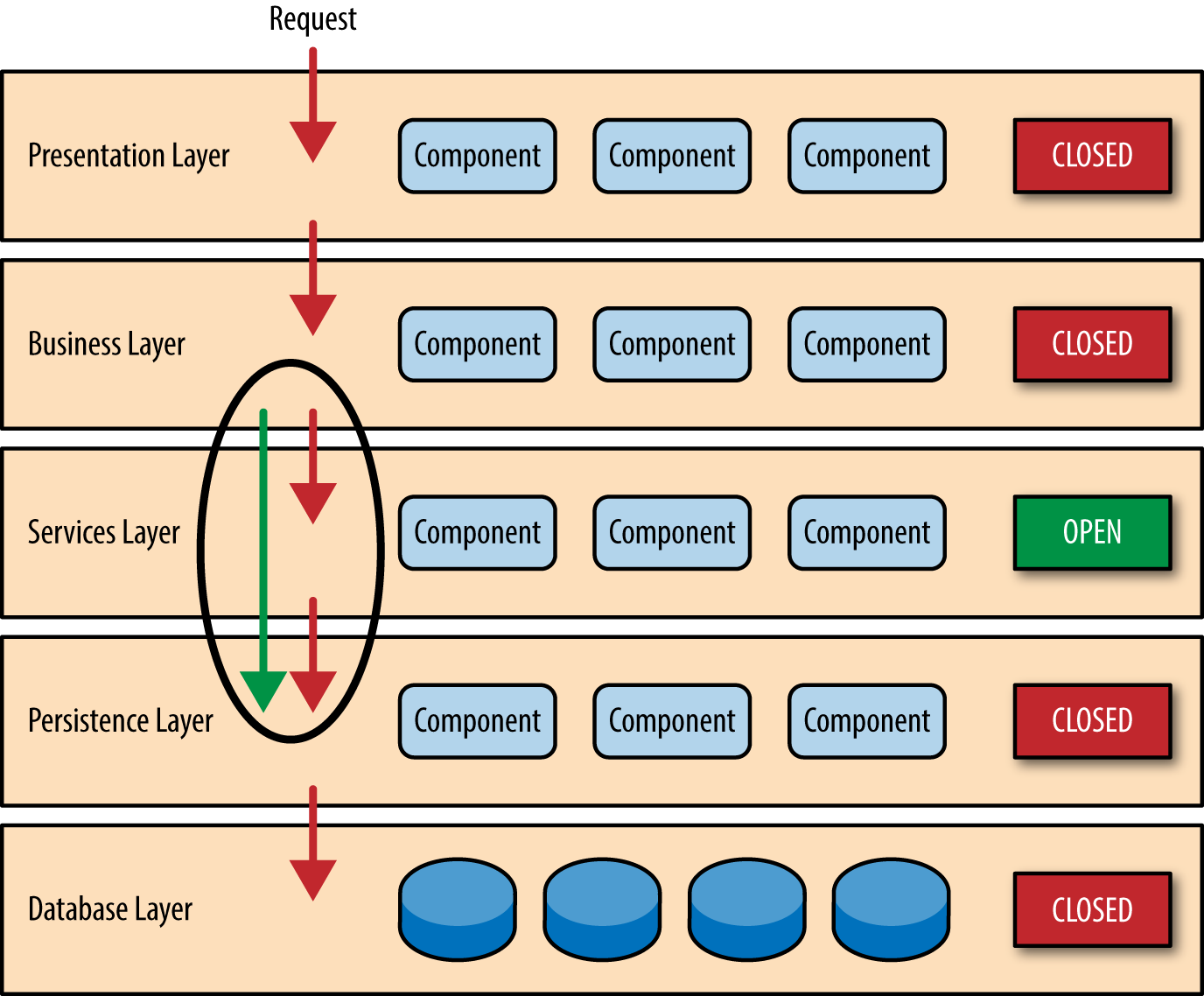Layered architecture
A way to divide your system's code into different layers with different purposes
Basic idea

(image source )
- System is divided into set of layers based on their technical purpose (separation of concerns)
- Layers encapsulate as much of their behavior as possible in order to isolate layers from changes inside other layers
- Request passes through layers from top to bottom and then back up
- Each layer can depend one or a few layers below it but should not know anything about any layer above it
Benefits/drawbacks
- Easy to get started with this kind of architecture
- Easy to make technical changes (e.g., swapping out the database) as changes will be confined to a single layer (and if that layer's interface changes, it will likely only affect the layer above it)
- Functional changes are likely to require changes to several layers
- Problem: when working on a single functional area, you will likely need to find the relevant classes below several top-level folders (according to the layer they are in)
- This often means that a layered architecture is not a good way to split up a system into several parts maintained by independent teams
- If separation by functional areas is more important, consider looking at Package by feature or component
Typical layers
Starting from the bottom:
- Database layer: the actual database
- Persistence layer: takes care of talking to the database
- Provides interfaces for retrieving and saving data (
getUser(id: string),saveUser(user: User)) - Could return simple data transfer objects or instances of business entity classes that actually encapsulate business logic
- Try to return something that makes sense from the point of view of the domain, rather than just the structure of database rows (this way, all stuff specific to the kind of database we use is encapsulated in this layer and also easy to change)
- Provides interfaces for retrieving and saving data (
- Business layer: contains business logic to work with entities
- If persistence layer returns data transfer objects without actual behavior, all business logic will sit here
- If persistence layer returns instances of classes encapsulating business logic, the business layer will call methods on those instances as needed and coordinate across multiple instances of potentially multiple classes as needed
- Presentation layer: contains code related to interaction with the user
- APIs are exposed here
- Server-side rendering would also sit here
Note: a layered architecture could have more layers than these if it makes sense
Open/closed layers
By default, layers are often considered closed:
- Requests are not allowed to bypass the layer
- Can be important for security, data integrity, ...
- Helps with maintainability: if a layer can only depend on the layer exactly below it, a change in layer A will only directly impact layer B directly above it
- Example: business logic layer might contain logic deciding whether a certain user can access a certain specific record or not
- Need to take care to enforce this, otherwise it is likely that layers are bypassed in some cases without the team realizing it
- Hard to enforce using pure encapsulation because every layer needs to expose its functionality for at least one other layer to use (making it likely that logic in other layers can also access it)
- Could use static analysis tools or linting to detect and forbid bypassing the layer
Sometimes, it makes sense to mark a layer as open:
- Requests may or may not bypass the layer
- Layered architecture with open layers is sometimes also called a relaxed layered architecture
- Example: creating a services layer with logging, auditing functionality
- We want this to be called by business layer, not by presentation layer -> put the services layer between business layer and persistence layer
- However, it does not make sense that business layer would need to pass through services layer to get entities -> business layer should be allowed to bypass services layer

(image source )
Typical antipattern: lasagna architecture
Also called architecture sinkhole anti-pattern
Some symptoms:
- Lots of layers
- Large percentage of requests just passed through layers without anything useful happening in most layers
- In any layered architecture, this will likely be true for a minority of the requests, but it becomes a problem if this is the case for a majority of the requests
Making some layers open could help solve this
Resources
- Building Evolutionary Architectures (book by Neal Ford, Rebecca Parsons and Patrick Kua) (summary slides )
- Layered Architecture
- Layered Architecture